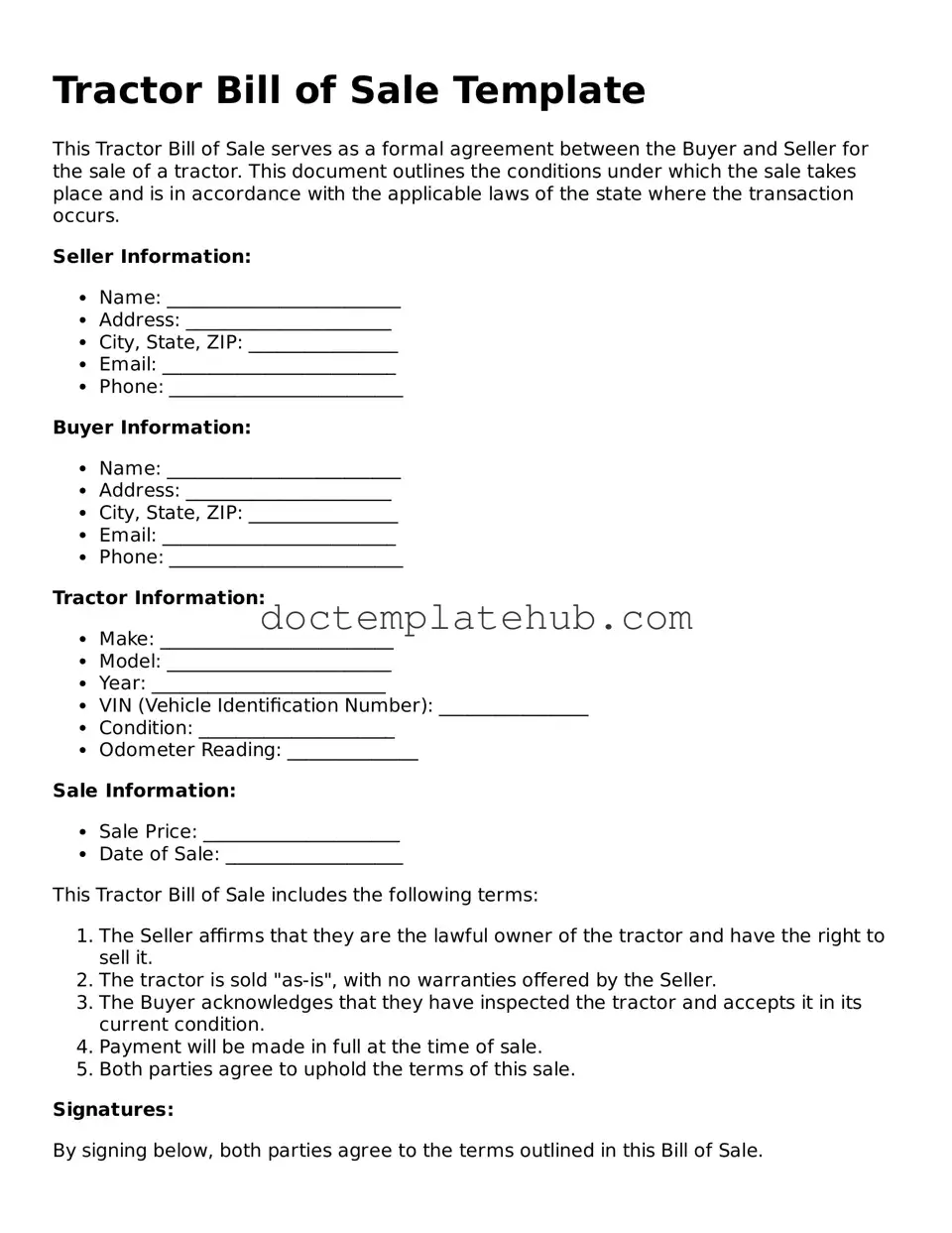What is a Tractor Bill of Sale?
A Tractor Bill of Sale is a legal document that records the sale of a tractor between a seller and a buyer. It includes important details such as the names of both parties, the tractor's description, the sale price, and the date of the transaction. This document serves as proof of ownership transfer and can be useful for future reference or registration purposes.
Why is a Tractor Bill of Sale important?
This document is important because it protects both the buyer and the seller. For the seller, it provides evidence that the tractor has been sold and that they are no longer responsible for it. For the buyer, it confirms their ownership and can be essential for registering the tractor with local authorities or for insurance purposes.
What information should be included in a Tractor Bill of Sale?
A Tractor Bill of Sale should include the following information: the full names and addresses of the buyer and seller, a detailed description of the tractor (including make, model, year, and VIN), the sale price, the date of the transaction, and any warranties or conditions of the sale. Both parties should sign and date the document to make it valid.
Do I need a notary for a Tractor Bill of Sale?
While a notary is not always required, having the Tractor Bill of Sale notarized can add an extra layer of authenticity. Some states may require notarization for certain transactions, so it’s advisable to check local regulations. A notarized document can help prevent disputes in the future.
Can I create my own Tractor Bill of Sale?
Yes, you can create your own Tractor Bill of Sale. However, it’s important to ensure that all necessary information is included and that the document complies with your state’s requirements. There are templates available online that can help you draft a comprehensive bill of sale.
What should I do after completing the Tractor Bill of Sale?
After completing the Tractor Bill of Sale, both the buyer and seller should keep a signed copy for their records. The buyer may need to present the document when registering the tractor or obtaining insurance. It's also a good idea to file any necessary paperwork with local authorities to officially record the change of ownership.
